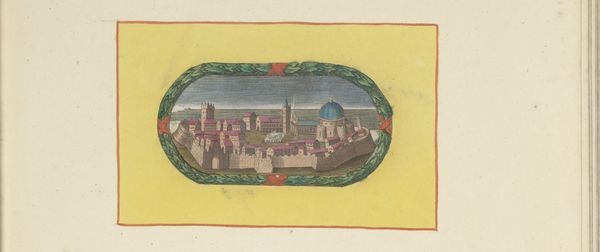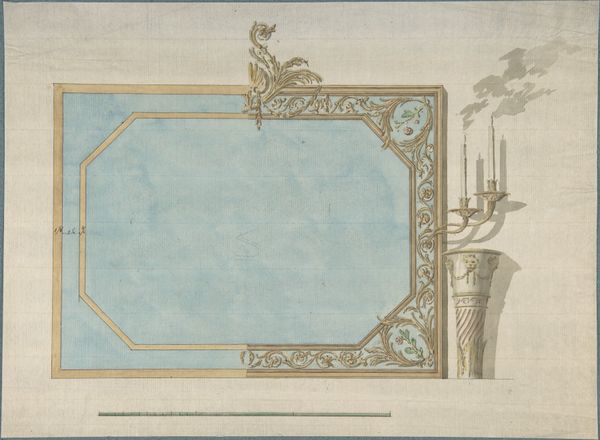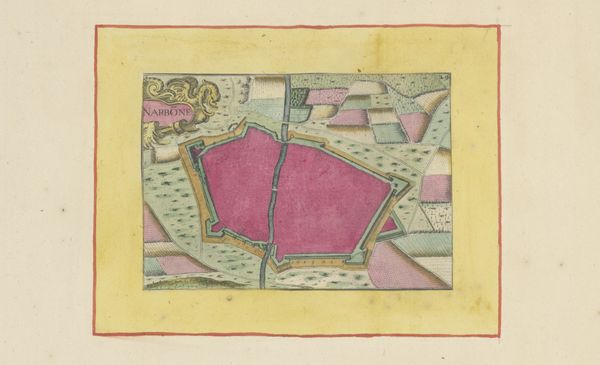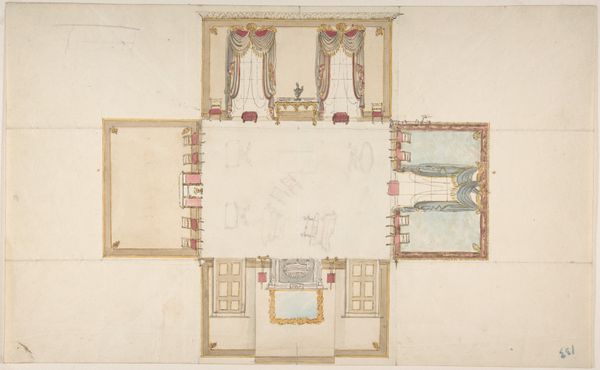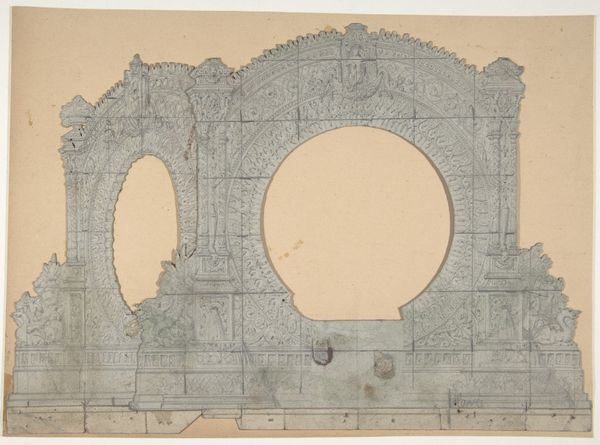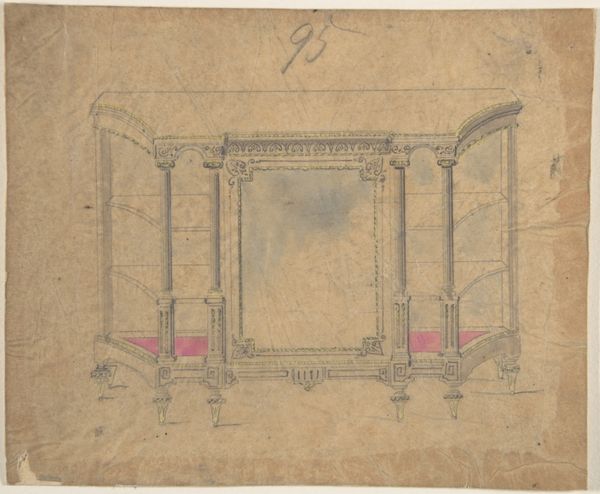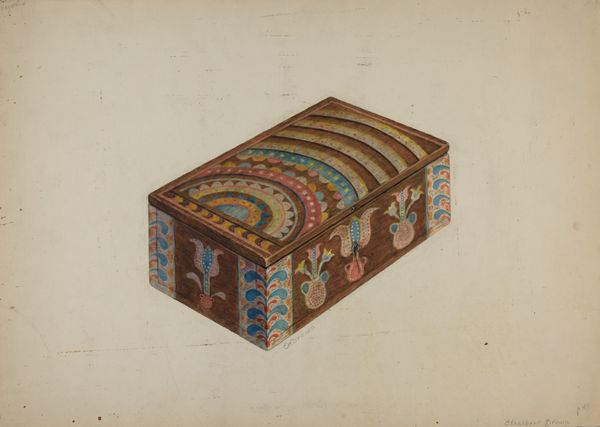
Design for a Stage Set at the Opéra, Paris 1830 - 1890
0:00
0:00
Dimensions: Irregular sheet: 6 x 16 3/4 in. (15.3 x 42.5 cm)
Copyright: Public Domain
Curator: This watercolor and ink drawing offers a peek behind the curtain, quite literally. Titled "Design for a Stage Set at the Opéra, Paris," it’s attributed to Eugène Cicéri and dates from between 1830 and 1890. Editor: My first thought? A faded dream. The colors are so muted, the lines so delicate. It evokes a sense of nostalgia, almost melancholy. It’s the opposite of the grand spectacle I associate with opera. Curator: The fading aligns perfectly with its purpose: a design. Cicéri wasn't creating a performance but planning its visual container. Note how the architectural elements above the archway echo the forms of classical temples, hinting at the symbolic weight operas often carry, themes of tragedy and triumph, explored through these mythic and historical lenses. Editor: Yet the sketch feels unfinished, raw even. Are those notes scribbled along the top, hints of revisions or frustrations during the creative process? It highlights the often unseen labor behind these seemingly effortless artistic achievements, the class system and power structures. What voices and labor were not represented in the production of this scene design, as they catered to the wealthy elite of Paris? Curator: Possibly. Or maybe simply notations regarding color or light. Cicéri was, after all, a master of theatrical illusion. He understood how lighting and color could create mood and manipulate perception, crafting entire worlds on stage through symbols, informed by long traditions of theatrical stagecraft that tap deep into our shared visual culture. Editor: It is quite interesting to think about theater being such an art form available for wealthy people only. How can we bring theater to all populations today? That is an interesting symbol too; perhaps one that's very present for people reflecting on their lack of access and mobility in public space. Curator: Indeed, access and interpretation are vital to meaning. Editor: Ultimately, this drawing gives a glimpse into not just a stage design, but into a society, its values, and perhaps, its shortcomings. Curator: Agreed. A blueprint hinting at layers of visual, emotional, and social significance still echoing across the centuries.
Comments
No comments
Be the first to comment and join the conversation on the ultimate creative platform.



